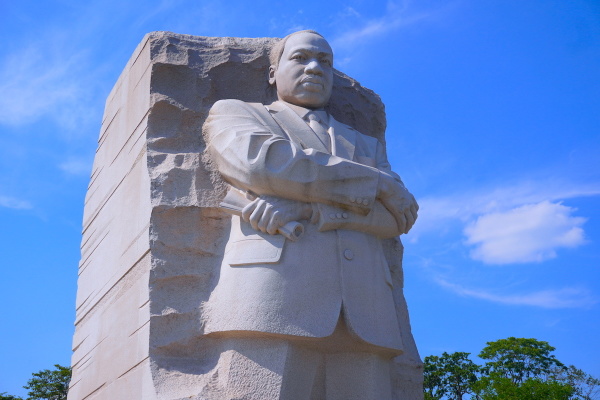Conversion therapy v SAFE-T: Myths and same-sex attraction

What exactly is “conversion therapy” or the newer, broader term, “conversion practices”? What do the people using the term mean by it? Do they even know?
These are all important questions because it’s a loaded term. It is a product of believing in the sexual orientation paradigm, the social construct that each person has innate and unchangeable sexual arousal templates, urges, and desires that are intrinsic to one’s identity. The ethic of the sexual orientation paradigm is that people are fulfilled only if they liberally embrace and express their personal “sexual orientation.”
The notion that people can change their so-called sexual orientation is an affront to those who hold to this paradigm. Even more egregious is to want to change. To suggest that one may find it more meaningful or righteous to reject one’s homosexual arousal templates, urges, and desires at all is deemed an assault on the dignity of those who attest to being content with their gay identity. “How dare you suggest my being gay is sinful, abnormal, or undesirable!” This motivates vehement opposition to any sentiment or practice (religious, clinical, or self-help) that assists people in resistance to their homosexual inclinations and/or exploration of heterosexual potential.
In more academic circles, researchers and some activists may use the term SOCE (sexual orientation change efforts). But of course, that term is limited to counseling for changes in homosexuality, and the pro-LGBT lobby wants to eliminate efforts to explore change in so-called “gender identity” and “gender expression” as well, so they may also use SOGICE (sexual orientation and gender identity change efforts) or SOGIECE (sexual orientation and gender identity and expression change efforts). But these terms are rather sterile and lack the oomph necessary to mobilize enraged masses to eradicate the evil menace of help for those with unwanted same-sex eroticization.
To elicit that level of religious fervor within their pro-LGBT fanatics, they employ a common religious concept: conversion. “Conversion therapy” is an evocative term. It brings up a number of fear-inducing connotations in the public consciousness fit for the boogeyman they’re trying to conjure up.
First, it presents the strawman goal of categorical change. Because of the core axiom that “sexual orientation” is innate and intrinsic to identity, it implies an effort to completely change someone from one type of human to another (“gay to straight”). When everyone believes that sexual orientation is just as natural as ethnicity, then any change effort necessarily is categorical, and therefore absurd at best, dangerous at worst.
Because of their assumption that a truly free person would only ever gratify his/her sexual urges, they cannot conceive of a reason a person who experiences same-sex attraction would freely pursue change. Therefore, they assert that therapy for same-sex attraction and/or gender identity is coercive by nature, that individuals (minors especially) are forced to engage in counseling or compelled to seek it because of internalized shame from a homophobic society or family. This assumption makes it quite easy to paint ministers and counselors like myself as villains working in collusion with rejecting parents, churches, and institutions.
To fully discredit these efforts, the pairing of “therapy” with a religious term like “conversion” easily brings up ideas of novel, bizarre, pseudoscientific, ritualistic, primitive, and, of course, downright torturous practices. They want you to think that all forms of counseling for sexuality conflicts are monolithic, as if the “conversion therapy” boogeyman they created is its own counseling approach. The last thing our opponents want you to know is that we use mainstream counseling techniques, and we help our clients identify realistic goals.
So, to really amplify emotional reactions against our work, our opponents rely on propaganda. They have successfully indoctrinated the culture to associate counseling for unwanted same-sex attraction with aversive techniques like electroshock, induced vomiting, inflicting self-harm, and other medieval torture methods. We’ll address aversive techniques more adequately in a future part of this series, but it shouldn’t take much work to show that these caricatures of contemporary counseling for same-sex attraction are fictitious and utterly laughable. And yet these outrageous, unsubstantiated claims are admitted as testimony in hearings, weaponized to outlaw counseling.
“Conversion therapy” is defined so broadly that it ought to be rendered meaningless. In 2018, the Williams Institute claimed that 698,000 adults have experienced “conversion therapy” at some point in their lives, and they estimated that 20,000 youths will experience “conversion therapy” by a licensed professional in the states where it was not yet banned for minors and 57,000 youths will experience it from religious or spiritual advisors. I’m well-connected in this field; there are not enough therapists who do what they call “conversion therapy” to see that many clients. How they arrive at these inflated numbers is dubious. But when California almost passed AB2943 in 2018, which would have banned all paid goods and services that discourage LGBT feelings, behavior, and/or identity or promote change in sexuality, it became clear how wide a net the activists were casting. If you attend a church (and give tithe to this church) where God’s standards for sexuality and marriage are taught plainly, guess what — you just underwent “conversion therapy”! If you read the Bible’s teachings on sexuality, you actually conversion therapied yourself and you didn’t even know it!
So, what is the truth? If someone uses the term “conversion therapy” unironically, I know right away that this person does not know what he/she is talking about. No one in the field of ministry or counseling for same-sex eroticization or gender identity confusion uses the term. It’s a pejorative term meant to unfairly discredit a wide range of practices, most of which aren’t even supposed to be actual therapy.
Let’s be more precise. Even SOCE, which was used in the first therapy ban for minors (in California in 2012), is too broad. Reading books, going to seminars or intensives, praying and personally using spiritual disciplines could easily be labeled “sexual orientation change efforts,” but they are not therapy. Going to a peer-led support group or talking with a pastor or lay minister are also not therapy. Many transformational “ex-gay” ministries might include counseling but not necessarily licensed professional therapy, and hence they’ve been protected from most therapy bans in the USA.
Instead of SOCE or previous terms like reorientation therapy, the Alliance for Therapeutic Choice and Scientific Integrity adopted the term SAFE-T (sexual attraction fluidity exploration in therapy) in 2016 to distinguish professional therapy from all other forms of help for sexuality conflicts. I personally would have preferred the term normative sexuality counseling, as it would cover therapy for more than just same-sex attraction. Regardless, SAFE-T is a more accurate term than SOCE or “conversion therapy” because it is exclusive to professional therapy approaches. But since clinicians in this field are not monolithic, it is inclusive of a wide range of therapeutic styles (psychoanalytic, narrative, psychodrama, cognitive-behavioral, etc.).
Historically, the most famous (or infamous) SAFE-T approach was Reparative Therapy, founded by the late Joseph Nicolosi. Sadly, people effectively made Reparative Therapy synonymous with “conversion therapy,” making the brand untenable. Fortunately, the model evolved enough to become Reintegrative Therapy, developed by Joe Nicolosi, Jr, which has wider applications for trauma and addictions and it is particularly helpful in altering sexual arousal templates. This is the approach in which I am certified.
May you think critically before accepting the terms of this discussion. Consider the reasons why language is being manipulated. What could the ones in power be influencing you to think regarding this subject?
Andrew Rodriguez is a licensed professional counselor in Pennsylvania. He's the director of Integrity Christian Counseling and the creator of the YouTube channel PsychoBible, in which he discusses psychology, theology, and sexuality. He's a certified Reintegrative Therapist. He's on the board of Voice of the Voiceless, uplifting the voices of ex-LGBT people. And he does work with ReStory Ministries, equipping churches to address LGBTQ. He's been married to his wife Jessica since 2007.Counseling practice website: integritychristiancounseling.care PsychoBible: youtube.com/PsychoBible





















